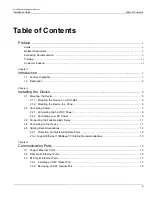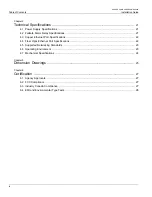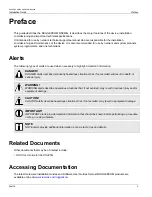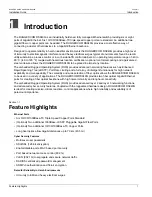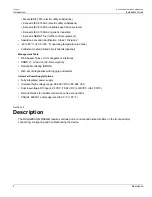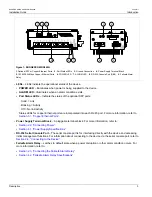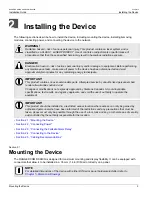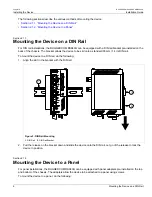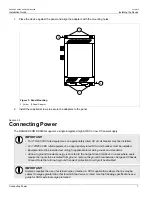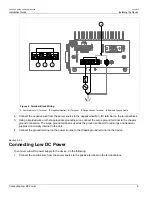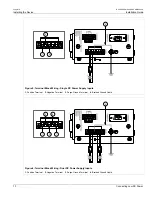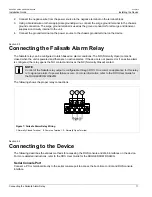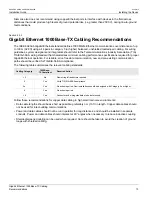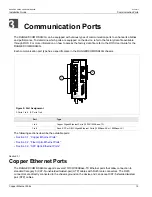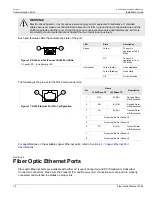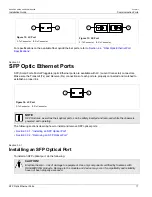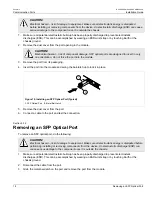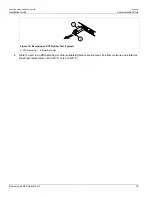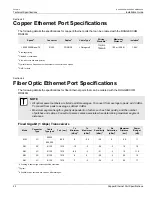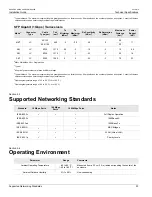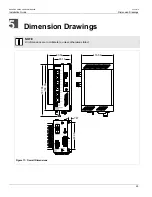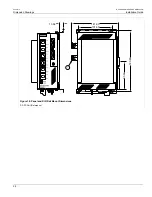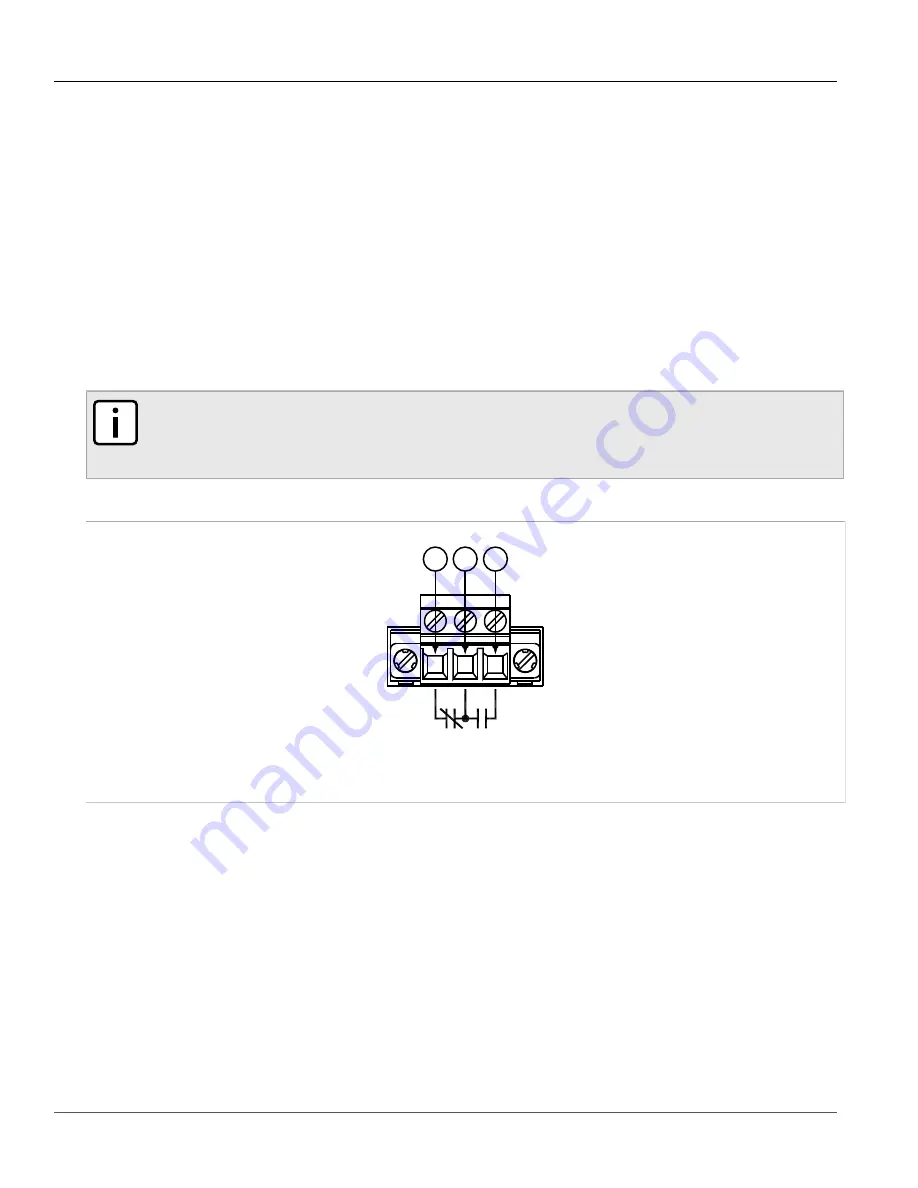
RUGGEDCOM RUGGEDCOM RS940G
Installation Guide
Chapter 2
Installing the Device
Connecting the Failsafe Alarm Relay
11
2. Connect the negative wire from the power source to the negative terminal on the terminal block.
3. Using a braided wire or other appropriate grounding wire, connect the surge ground terminal to the chassis
ground connection. The surge ground terminal is used as the ground conductor for all surge and transient
suppression circuitry internal to the unit.
4. Connect the ground terminal on the power source to the chassis ground terminal on the device.
Section 2.3
Connecting the Failsafe Alarm Relay
The failsafe relay can be configured to latch based on alarm conditions. The NO (Normally Open) contact is
closed when the unit is powered and there are no active alarms. If the device is not powered or if an active alarm
is configured, the relay opens the NO contact and closes the NC (Normally Closed) contact.
NOTE
Control of the failsafe relay output is configurable through ROS . One common application for this relay
is to signal an alarm if a power failure occurs. For more information, refer to the ROS User Guide for
the RUGGEDCOM RS940G.
The following shows the proper relay connections.
1
2
3
Figure 7: Failsafe Alarm Relay Wiring
1.
Normally Closed Terminal
2.
Common Terminal
3.
Normally Open Terminal
Section 2.4
Connecting to the Device
The following describes the various methods for accessing the ROS console and Web interfaces on the device.
For more detailed instructions, refer to the
ROS User Guide
for the RUGGEDCOM RS940G.
Serial Console Port
Connect a PC or terminal directly to the serial console port to access the boot-time control and ROS console
interface.

